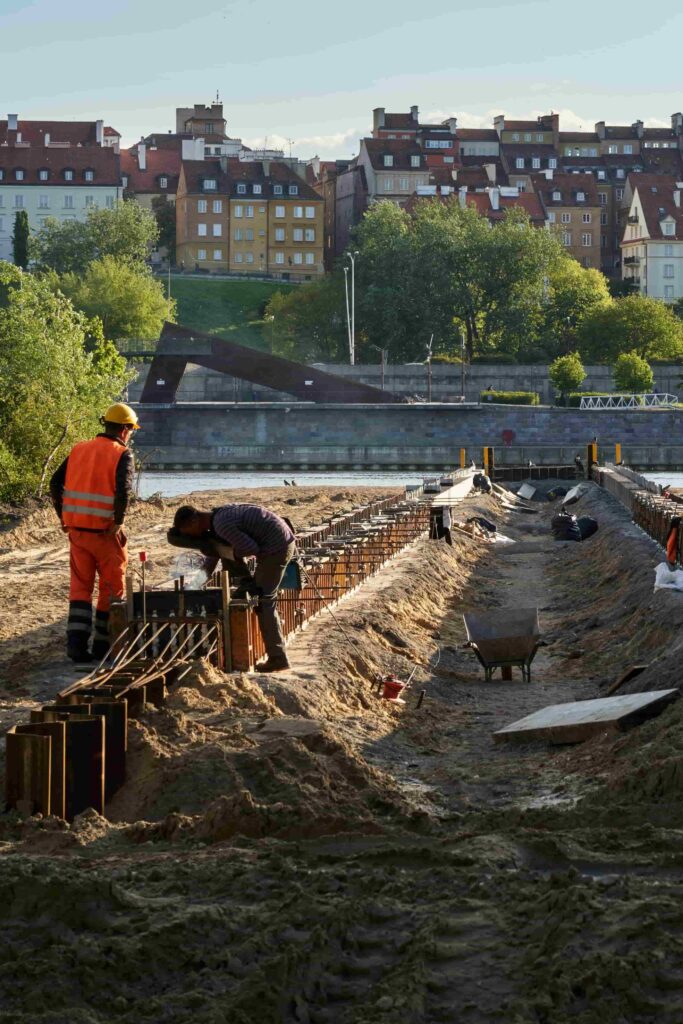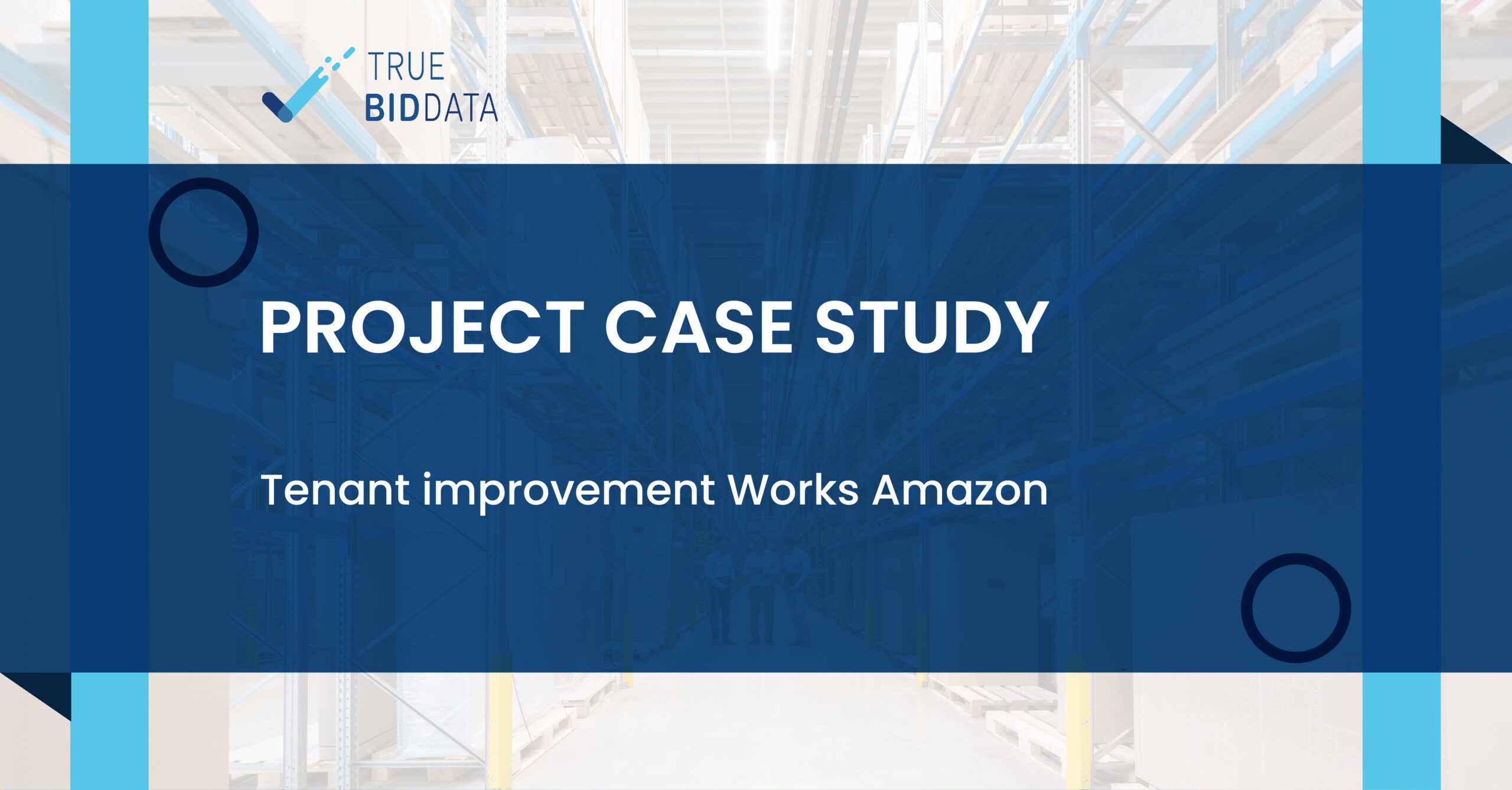
Civil works form the backbone of any infrastructure project, providing the physical framework on which buildings, transportation, and utilities depend. Whether it’s earthworks, paving, stormwater drainage, or structural concrete, precision in civil works estimating determines whether a project stays on budget or spirals out of control.
At True Bid Data, our mission is to bring data clarity and process efficiency to every estimate. From New York City to Los Angeles, our clients rely on digital takeoffs, CSI-structured breakdowns, and region-specific cost data to bid with confidence.
What Is Included in Civil Works Estimating?
Civil works encompass a wide scope of site and structural preparation tasks. Typical items in a civil estimate include:
- Earthworks: excavation, backfilling, grading
- Site drainage: stormwater pipes, manholes, catch basins
- Utilities: water mains, sewer systems, electrical duct banks
- Roadworks: paving, curb and gutter, signage
- Concrete structures: foundations, retaining walls, slab-on-grade
- Landscaping and site furnishings
In cities like New York City, where space is limited and subsurface congestion is common, each of these components must be meticulously quantified and costed.
Why Civil Estimating Must Be Data-Driven
A typical civil contractor manages dozens of overlapping scopes. If quantity miscalculations or outdated pricing are embedded into the initial bid, cost overruns are almost guaranteed. That’s why True Bid Data emphasizes:
- Digital takeoff from drawings and specifications
- CSI division-aligned structure for consistent scope management
- Material and labor cost breakdown tailored to local markets
- Integration with project budgeting and cost forecasting tools
By combining quantities, costs, and crew productivity into one system, we help teams visualize how every linear foot of pipe or cubic yard of concrete impacts the project total.
Civil Works in Urban Contexts: NYC Example
Estimating civil works in New York City comes with unique challenges:
- Depth and congestion of underground utilities
- Coordination with multiple municipal agencies (DEP, DOT, MTA)
- Night or weekend-only work permits for street-level operations
- Prevailing wage and union labor rates
- Limited laydown or staging area
These constraints affect not only unit costs but also productivity rates and subcontractor availability. True Bid Data factors these variables into every civil works estimate for NYC-based bids.
CSI Division Structure for Civil Estimating
To align with project documentation, we structure civil works under appropriate CSI divisions:
- Division 02 – Existing Conditions: site clearing, demolition
- Division 31 – Earthwork: excavation, grading, soil stabilization
- Division 32 – Exterior Improvements: asphalt paving, curbs, fencing
- Division 33 – Utilities: water, sanitary, storm systems
This structure helps GCs and subcontractors coordinate bids and cross-reference with engineers’ drawings and BOQs.
Labor and Equipment Productivity Analysis
Our estimates include crew-based unit labor analysis using national averages or city-specific data:
- Earthworks: machine + labor cost per cubic yard
- Piping: labor hours per linear foot based on pipe size and depth
- Concrete: cost per cubic yard placed, vibrated, finished
- Compaction: equipment cost per pass or per square yard
For NYC jobs, we adjust rates based on local union schedules, permitting restrictions, and known traffic control limitations that affect time on task.
Material Takeoffs with Real-Time Pricing
Civil projects consume significant materials—aggregate, geotextile, HDPE pipe, manhole covers, concrete. Our material breakdown includes:
- Quantity and unit (LF, CY, SF, EA)
- Supplier-based pricing or RSMeans reference rates
- Freight, fuel surcharges, and delivery considerations
- Substitutes or VE (value engineering) options when needed
We ensure that estimates are not only accurate but adaptable, so estimators can update prices quickly during rebid or addendum phases.
Forecasting and Cash Flow for Civil Projects
Because civil works usually commence at project start, proper cost forecasting is essential. True Bid Data provides:
- Phase-wise quantity and cost allocation
- Equipment rental scheduling
- Early procurement tracking (e.g., pipes, precast)
- Integration with construction scheduling tools (Primavera, MS Project)
This data helps construction managers forecast spending peaks, plan mobilizations, and track earned value throughout the civil phase.
Digital Takeoffs for Complex Drawings
Civil drawings often span multiple sheets—grading plans, utility layouts, profiles, cross-sections. We use digital platforms like PlanSwift to:
- Annotate excavation depths and slope grades
- Count structures (inlets, valves, cleanouts)
- Track elevations and match plan with profile
- Ensure spec compliance from takeoff to final quantity
All marked-up PDFs are included in our deliverables, allowing reviewers and clients to audit every number.
Civil Works Estimating with True Bid Data
If your next civil bid is for a large public-school project in Queens, a warehouse in New Jersey, or a city park renovation in New York City, True Bid Data ensures you’re backed by real numbers, accurate insights, and actionable reports.
Our civil estimating is rooted in one principle: clarity before construction. With region-specific rates, data-backed takeoffs, and CSI-aligned structure, we make your bid more competitive—and your execution more predictable.
Visit True Bid Data to get started with professional civil works estimating that goes beyond spreadsheets.




